Korps Mariniers AR-10 Demonstration Report, 1957
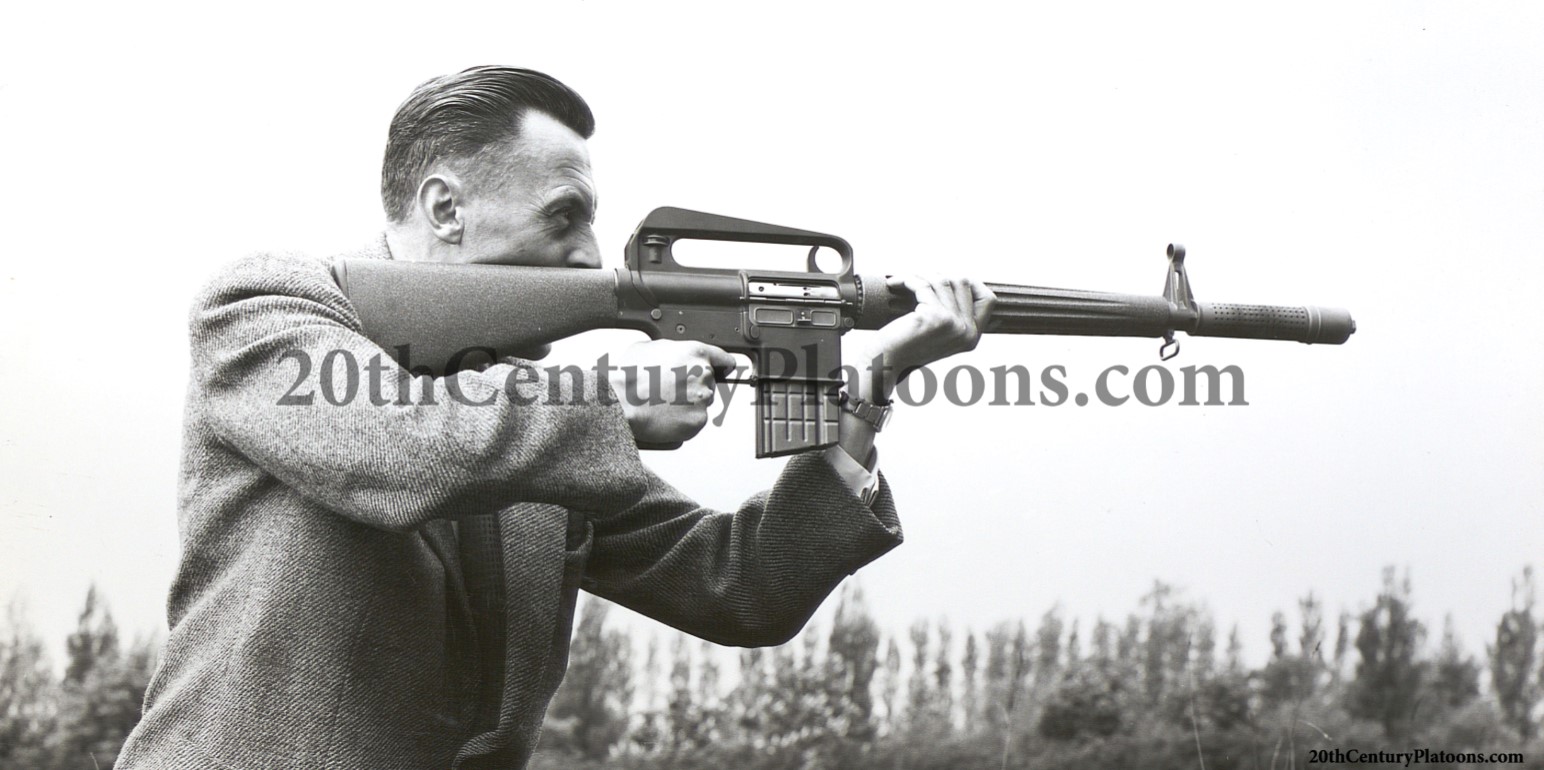
Introduction
The following is a report concerning a demonstration of the AR-10 on the 21st of May, 1957 at Waalsdorp. It can be accessed at the Nationaal Archief in Den Haag (The Hague) under the index Nationaal Archief, Den Haag, Korps Mariniers, nummer toegang 2.13.141, inventarisnummer 96: De proefnemingen met het Armalite AR-10 geweer, 1957. The images here are sourced from the same set of documents, though they are not necessarily images of the exact trial gun(s) at the described demonstration.Report of the Demonstration of the AR-10 (Armalite) Rifle
Location: WaalsdorpKorps Mariniers representatives:
Major G.J. Hilt
Captain F.C. van Duinen
1.0 Data:
1.1
| Weight | : | 6.85 lbs (over 3 kg) |
| Magazine | : | 0.25 lbs (110 grammes) |
| Length | : | 1.05 metres [41.3 inches] |
| Magazine capacity | : | 20 cartridges |
| Fire modes | : | Semi-automatic and automatic |
| Rate of fire | : | 750 rounds per minute |
1.2 The functioning is based on gas-operation.
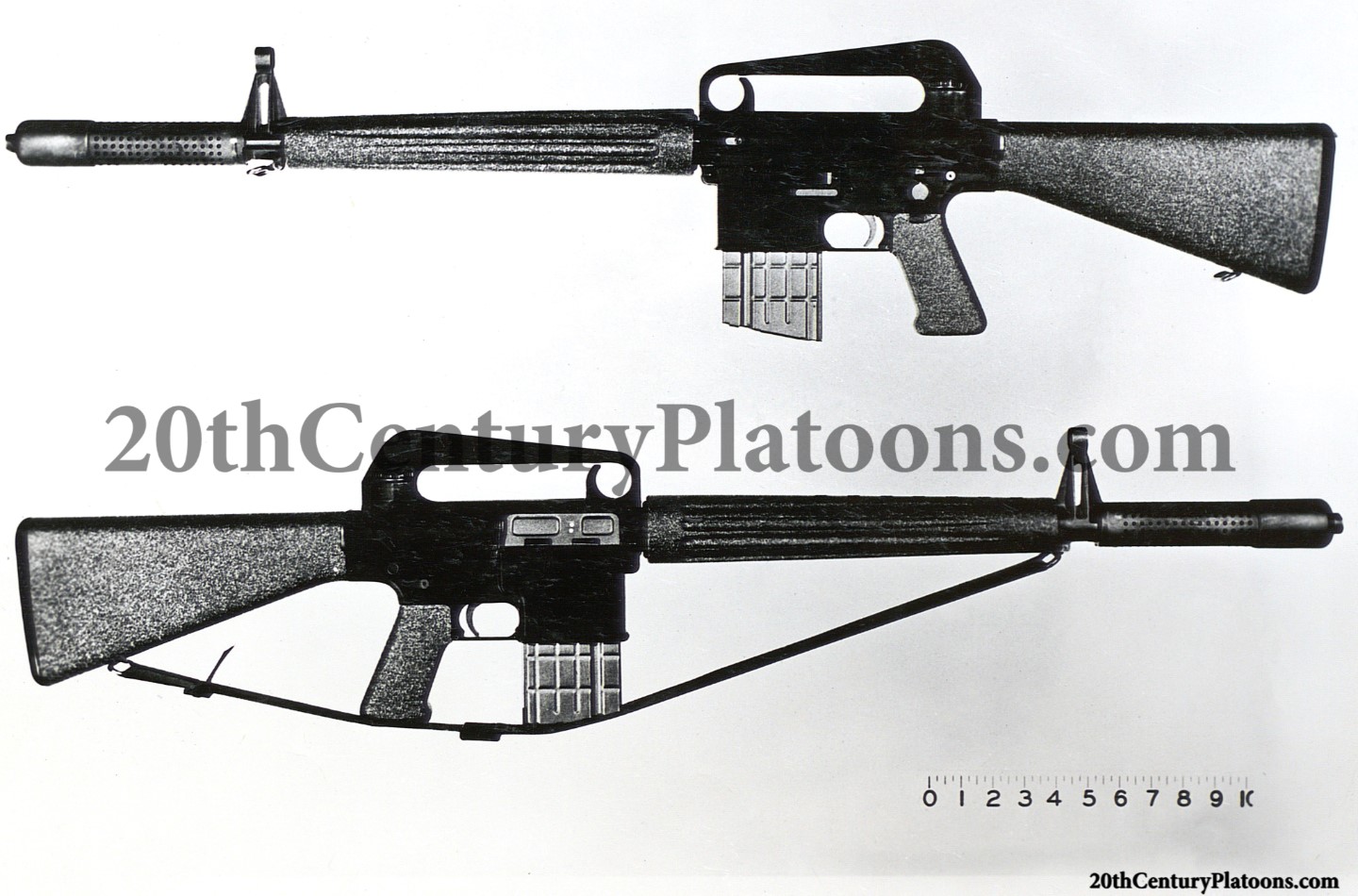
2.0 Demonstration
2.1 The following demonstrations took place:
a. Firing off-hand from the prone, kneeling, and standing positions at 200 metres.
b. As per point a., at 100 metres.
c. Firing from the hip, both semi-automatic and automatic fire at 50 metres.
d. As per point c., with the weapon having been rolled through sand before firing.
e. Firing a string of 20 rounds automatically, to determine the spread.
f. Firing with a new type of plastic blank cartridges, both semi-automatically and automatically.
2.2 Following the demonstration, the present officers were given the opportunity to familiarize themselves with the weapon
by firing a magazine, both in semi-automatic and automatic modes.
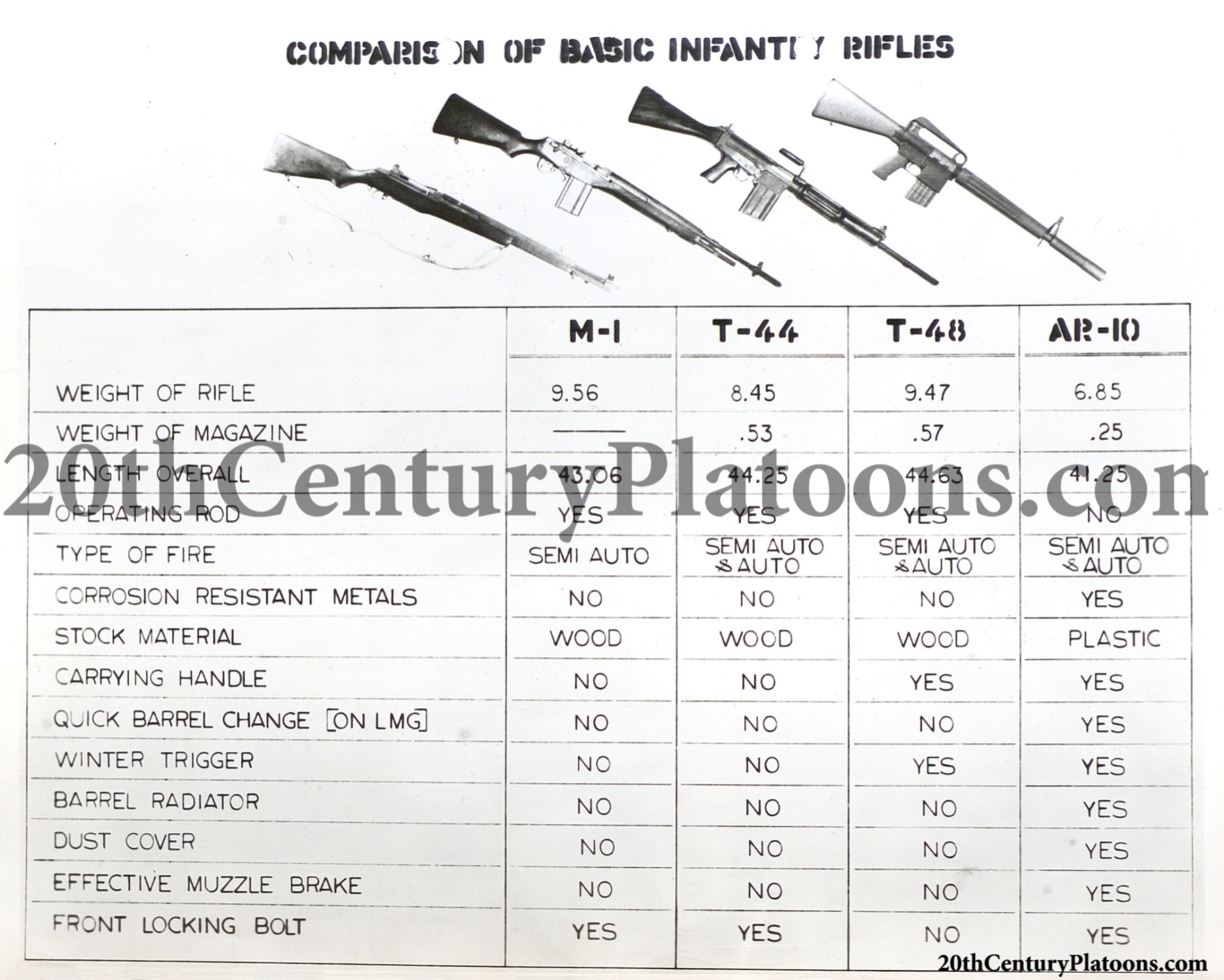
3.0 Findings.
3.1 Favourable findings:
3.1.1 In comparison with the currently in-use infantry rifles – whose weights vary between 8 ½ and 9 ½ lbs, this weapon compares very favourably with a weight of 6.85 lbs. The reduction in weight has for the most part been achieved through the use of aluminium and plastic for the non-moving parts.
3.1.2 The weapon is gas-operated, though the weapon uses a fixed gas tube, in which no moving pistons or springs are located, allowing the rate of fire to be increased and keeping the number of malfunctions at a minimum.
3.1.3 The weapon’s construction is very simple.
This has the following consequences:
a. Mass-production can occur easily, in contrast to many other weapons;
b. Disassembly and assembly requires only a few steps;
c. As a result of point b., maintenance and the replacing of parts is a simple affair;
d. The simple construction minimizes malfunctions;
e. The barrel is easily replaced.
3.1.4 The muzzle brake/flash suppressor cancels out 40% of the recoil, allowing semi-automatic fire to be kept on target easily.
3.1.5 The straight-line construction (stock placed on the same axis as the barrel) significantly reduces muzzle climb during automatic fire.
3.1.6 The weapon’s construction is as such that:
a. Little dust and so on can enter the weapon;
b. Dirt or debris which has accumulated will automatically be blown away by gasses tapped at the muzzle brake and bolt.
3.1.7 NATO-standard 7.62mm ammunition is used.
3.1.8 Two variants of the weapon exist:
a. A carbine, with a shorter barrel
b. A machine gun, with a heavier barrel, bipod, and belt-fed mechanism. Weight is 10.5 lbs.
3.1.9 By introducing a small blank-firing device, blank ammunition can be easily fired semi-automatically and automatically.
3.1.10 During the demonstration, noted were, amongst other facts:
a. Accuracy when fired semi-automatically;
b. The small cone of fire when fired automatically;
c. The clear, distinctive sight picture;
d. The light weight;
e. The minimal recoil;
f. The overall lack of malfunctions.
3.2.1 Current rifle drill cannot be performed with the weapon. The weapon is too short and requires new drill.
3.2.2 Attaching a rifle grenade launcher is currently only possible – according to the director of AI - by removing the muzzle brake/flash suppressor, with all the [negative] consequences associated.
3.2.3 Attaching a bayonet is currently only possible – according to the director of AI - by removing the muzzle brake/flash suppressor, with all the [negative] consequences associated.
3.2.4 The straight-line construction requires the line of sight to be raised (7 cm/2.75in higher than the bolt), causing the rifleman’s silhouette to increase.
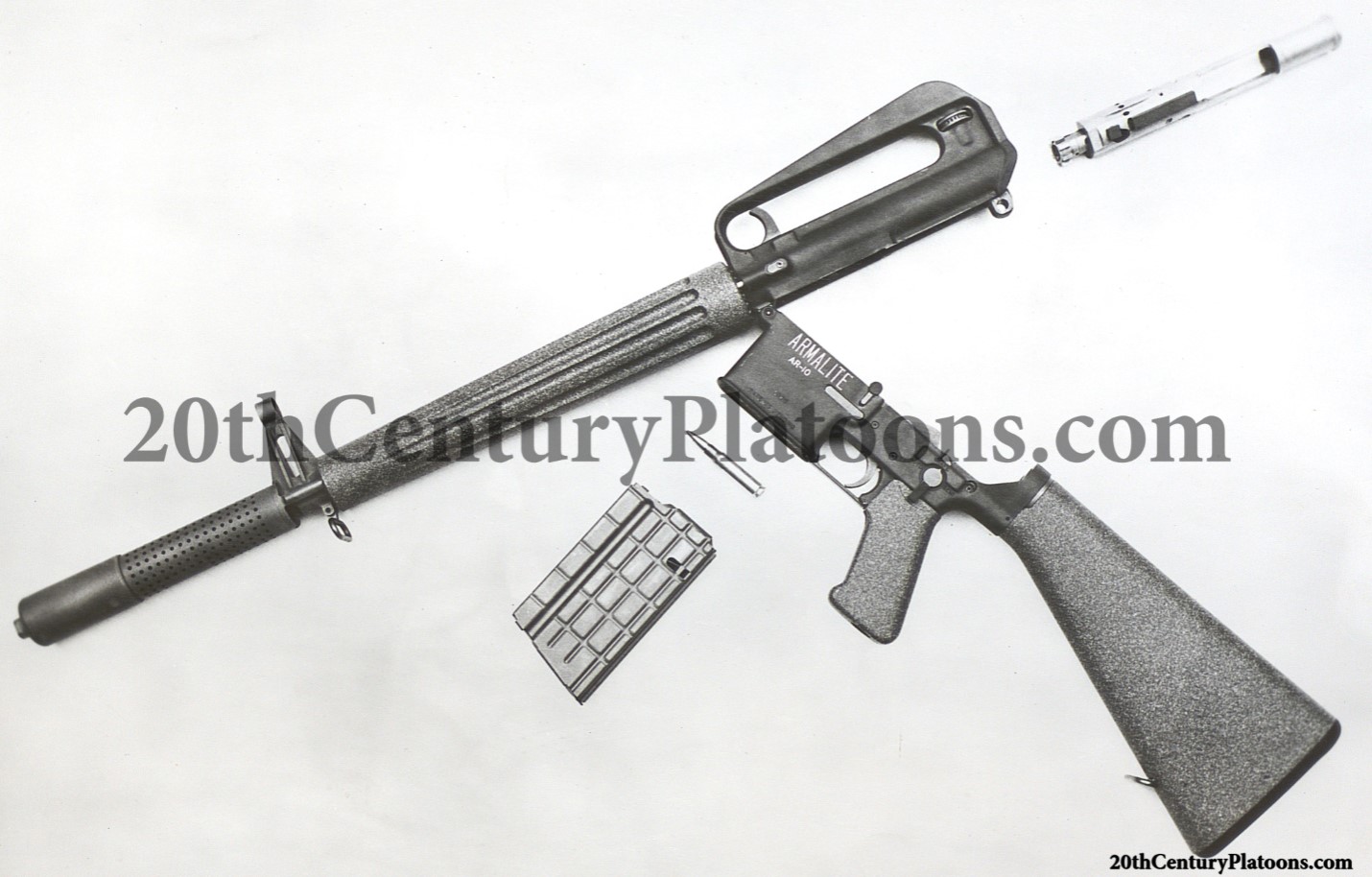
4.0 Conclusion.
4.1 If the Korps Mariniers changes over to NATO ammunition in the future – for which current weapons are unsuitable – the AR-10 is a serious contender to replace the rifle [Garand], carbine [US .30 Carbine], submachine gun [Thompson], and machine gun [Browning Automatic Rifle].
A considerable advantage over other NATO weapons, is the fact that the weapon will be produced by Artillerie-inrichtingen of Hembrug, Zaandam, which will lead – according to the director of AI – to a considerably lower price than other NATO weapons (T 44 and T 48).
After a possible purchase however, the rifleman will require a different type of belt [from the then-in-use US M1923 pattern], though as the magazines resemble those of the BAR, it is possible the BAR belt can satisfy this requirement.
At the request of the Chief of Staff of the Korps Mariniers I have requested the Navy’s chief of armaments to order 13 AR-10 rifles, to be tested at the Van Braam Houckgeestkazerne in Doorn. These 13 AR-10 rifles have been ordered.
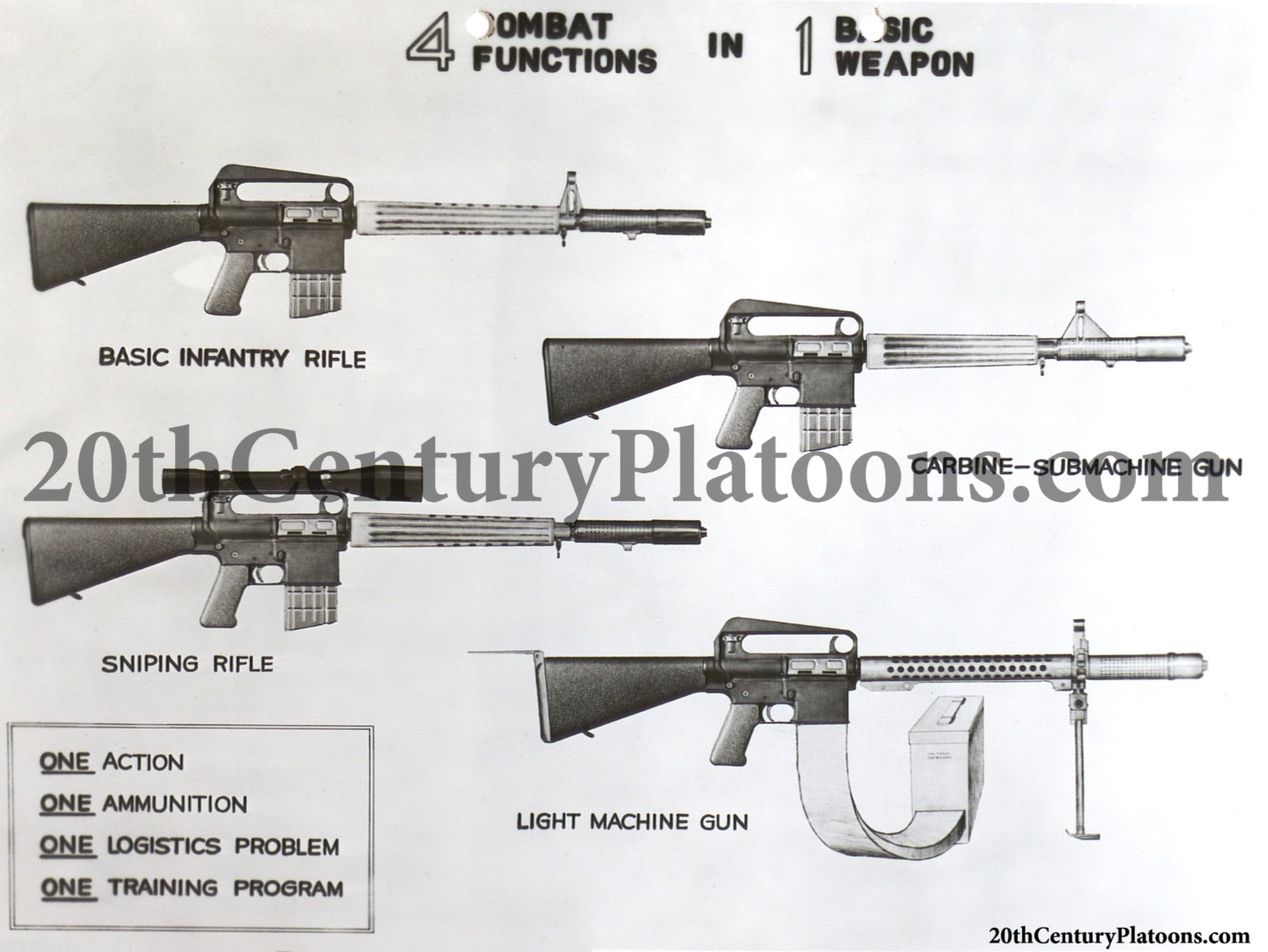
Footnotes
